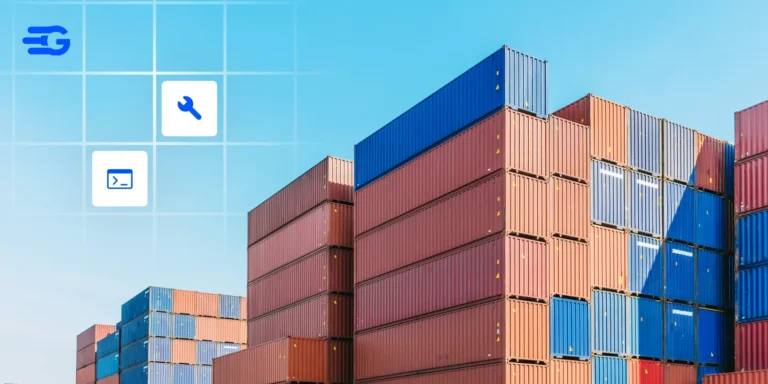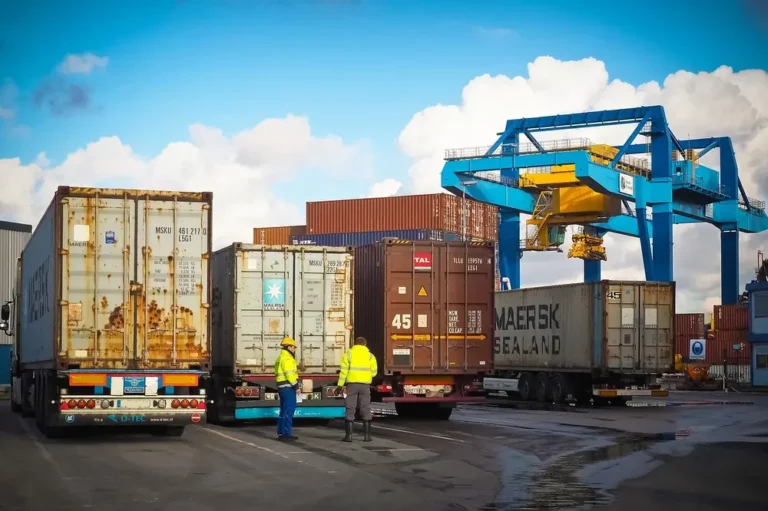Trump’s Second-Term Tariff Impact: The 2018 Deja Vu [UPDATED]
In the early hours of November 6th, Donald Trump secured a return to the presidency of the United States following a close race, defying exit polls expectations. This political shift has sent ripples through global markets and the anticipation of Trump’s second-term tariff impacts have cast uncertainty over the future of international trade and economic policy.
Increased global tariffs were one of the heavier points under the Trump campaign, with a promise of 2018 norms, only stronger and higher. In a nutshell, the president-elect promises to increase global tariffs, across the board, by 10-20 percent and a 60-100 percent tariff on Chinese imports. While it is impossible to know how far he will be able to follow through, the impact of the anticipation is leading us into a case of disruptive front loading.
UPDATE: April 6, 2025 – Expanded Tariffs and Global Repercussions
In a significant escalation of trade measures, President Donald Trump has announced the implementation of extensive baseline tariffs aimed at addressing trade imbalances and promoting domestic manufacturing. Effective April 5, 2025, a universal 10% tariff has been imposed on all imports.
Additionally, higher tariffs targeting specific countries will commence on April 9, 2025, including:
- 34% on Chinese goods
- 20% on European Union goods
- 24% on Japanese goods
These actions have raised concerns about potential inflation, increased consumer prices, and strained international relations. Several countries have criticized the move and are considering countermeasures.
Furthermore, a 25% tariff on all imported automobiles has been implemented, with imported auto parts expected to follow. This is anticipated to lead to higher prices for vehicles and related products.
Economists warn that these tariffs could result in increased costs for American consumers on a wide range of products, from groceries to electronics, and may slow economic growth. In response, several U.S. companies have indicated plans to raise prices to offset the increased costs of imported goods. This includes sectors such as food, retail, and manufacturing.
The international community has expressed concern over these measures, with some countries preparing retaliatory tariffs, potentially leading to escalating trade tensions. There is also the added threat of a consumer boycott on American brands, making this a lose-lose situation for everyone involved.
President Donald Trump’s announcement of has led to significant turmoil in global financial markets:
Investor Sentiment: The market reaction reflects growing fears of a global recession, as escalating trade tensions between the U.S. and China intensify.
U.S. Stock Futures: Futures linked to major indices have plummeted, with Nasdaq-100 futures dropping over 3.5%, indicating a sharp decline at the upcoming market opening.
Global Markets: Asian markets have experienced substantial losses; Japan’s Nikkei 225 fell 6%, triggering a temporary halt in trading. European markets are also bracing for declines.
Stuart Anderson at Forbes underscores the legality of such action, seeing how this was a presidential use of emergency powers. Never in the history have these been used to impose tariffs.
Legal Challenge to Tariff Powers under IEEPA
On April 3, 2025, the New Civil Liberties Alliance filed a lawsuit on behalf of Simplified, a Florida-based importer, challenging President Trump’s use of the International Emergency Economic Powers Act (IEEPA) to impose tariffs on Chinese goods.
The complaint argues that:
- IEEPA doesn’t authorize tariffs – It doesn’t mention tariffs and lacks clear language to support such powers.
- No true emergency – The tariffs are not necessary to address the cited emergency (illegal opioids).
- Unconstitutional delegation – If IEEPA allows this, it gives the president unchecked power, violating the nondelegation doctrine.
- Procedural violations – The tariff changes breach the Administrative Procedure Act.
This marks the first legal challenge to using IEEPA for trade tariffs in its nearly 50-year history.
UPDATE: February 3rd 2025 – China Retaliates
In a swift move after President Trump’s tariff implications China’s commerce ministry and customs agency have imposed new export restrictions on critical industrial and technological metals, including tungsten, tellurium, and molybdenum, citing concerns over national security and strategic interests.
Additionally, China has introduced higher tariffs, imposing an extra 10% on crude oil, agricultural equipment, larger vehicles, and pickup trucks, along with a 15% increase on coal and natural gas.
Meanwhile, a 30-day suspension on tariffs targeting Mexico and Canada has been implemented following commitments from both countries to enhance border security and crack down on fentanyl trafficking.
In a separate move, China has placed PVH and Google on its “unreliable entities” list, subjecting both companies to an ongoing investigation.
UPDATE: February 2nd 2025 – Tariffs in Effect
President Trump has followed through on the promised tariffs which went into effect on the 2nd of February. Despite market hopes of seeing reduction in the number levied on Mexico and Canada along with a hike on China, the Trump administration has officially set 25 percent tariffs on both, the only exclusion being Energy resources in Canada which is at 10 percent. China is seeing an additional 10 percent. These three countries comprise majority share in US imports.
Retaliation from impacted countries have also been initiated, Canada has imposed 25 percent back on US while the Chinese government is in process of filing a case with the World Trade Organisation. Mexican authorities are preparing to announce their response in the early hours of 3rd February. Additionally, Doug Ford, the Premier of the Ontario province has imposed a ban on American alcohol in the region.
The presidential office claims that the measure has been taken to curb immigration and drug problems, with no economic justification. Kristi Noem, Homeland Security Secretary, made an official statement claiming that any hike in prices will be the responsibility of exporting countries who have not complied with President Trump’s demands. There also continues to be a heavy push for American Made.
According to Reuters, this move is set to impact $1.3 trillion in goods, or more than 40 percent of all US imports.
UPDATE: President Trump’s Inauguration
The 47th President’s inaugural address felt like a roller coaster for global markets. No immediate tariffs led to sighs of relief world-wide but experts worry that the celebrations were a bit preemptive.
President Trump emphasized that “essentially all countries take advantage of the U.S.” and committed to an overhaul of the trade system to protect American workers and families, in gradual steps.
Trade Policy
The President put microscopic attention on China, Canada and Mexico, claiming to effect tariff increments on the latter two as early as the 1st of February. Citing the border crisis – mass immigration and fentanyl movement – across the Canadian and Mexican border, a 25% tariff increase is expected.
Alongside, an executive order has been issued to federal agencies to review U.S. trade policy, investigate persistent trade deficits, and propose measures such as a global supplemental tariff or other remedies. There seems to be greater focus on domestic energy generation.
He also plans to address the trade imbalance with the European Union by implementing tariffs or boosting energy exports, encouraging European nations to increase their purchases of U.S. oil and gas.
Potential Trade War
A potential trade war looms as both Canada and Mexico have issued strong warnings in response to President Trump’s proposed tariff plans. Canada has threatened to impose penalties, including tariffs and trade restrictions, if the U.S. goes ahead with its plans.
Similarly, Mexico has signaled its readiness to retaliate with tariffs targeting American exports, raising concerns about escalating tensions and the impact on cross-border trade relationships. These developments highlight the growing risk of a tit-for-tat economic conflict that could disrupt North American supply chains and trade dynamics.
Market Reaction
Market analysts anticipate a dynamic policy environment and heightened market volatility under the new Trump administration, fueled by its early actions and assertive rhetoric. Financial markets are preparing for potential disruptions to international trade, with investors watching closely for clearer guidance on the administration’s long-term economic strategy.
The emphasis on energy exports and addressing trade deficits is also expected to influence currency movements and commodity prices, adding to the uncertainty. This unpredictable policy landscape has prompted businesses and traders to approach the situation with caution.
The 2018 Crisis
In 2018, Donald Trump’s tariff policy marked a significant shift in U.S. trade strategy, aiming to reduce the trade deficit and protect domestic industries. Key measures included a 25% tariff on steel and 10% on aluminum, focusing on Chinese imports, which eventually escalated to tariffs on over $250 billion worth of Chinese goods.
The impact of US-China tariffs on the global supply chain was substantial. Costs rose for U.S. businesses reliant on imports, leading to higher production costs, especially in manufacturing and construction. Companies restructured their supply chains, shifting production away from China to countries like Vietnam and Mexico, though this took time and investment. The tariffs also sparked retaliatory measures from China, disrupting U.S. exports, particularly agricultural products.
Strategically, the tariffs led to a supply chain diversification away from China, with a greater emphasis on regional manufacturing hubs and logistics technology. While some domestic industries saw short-term benefits, the broader effects included higher costs, disrupted trade, and strained global trade relations, prompting a reevaluation of global supply chain strategies.
Trump’s second-term tariff impacts are expected to follow a similar trajectory.
US Importer Anxiety – Trump’s second-term tariff impact
Trump’s second-term tariff impact renews these old concerns and pushes US-based importers into crisis management. In a CNBC article, Paul Braiser (vice president of global supply chain for ITS Logistics) discusses this return to 2018 frontloading patterns. He emphasizes how this time the impact of tariffs on US businesses 2025 is actually global and not just concentrated on Chinese imports. But it’s important to note that this strategy isn’t always the best recourse. Frontloading can cause large-scale disruptions and chaos in the supply chain – a trend we have already seen once before – here’s how:
Surge in Freight and Logistics Costs:
When Trump enacted tariffs in 2018, businesses rushed to import goods ahead of expected price hikes causing freight frontloading 2025, leading to a significant spike in freight rates, and ocean container shipping rates increased by over 70%. With a similar scenario expected now, the frontloading, one of Trump’s second-term tariff impact, of imports to avoid tariffs could create congestion at major U.S. ports, driving up shipping and logistics costs. This freight and logistics cost impact in 2025 is a key concern for companies forecasting a highly volatile environment (Xeneta, 2018).
Port Congestion Woes:
Port congestion, exacerbated during the 2018 tariff period, remains a major concern. With businesses pushing to stockpile goods, we could see increased waiting times at U.S. ports, particularly in major hubs like Long Beach and Los Angeles. Such port congestion on US ports in 2025 could cause delays, making it harder for companies to maintain steady inventory levels and meet customer demands, further increasing logistical strain.
Overpopulated Shipping Lines
Trump’s second-term tariff impact could lead to overpopulation on alternative shipping routes as companies attempt to circumvent more congested or higher-tariffed paths. As freight diversions shift traffic to less used routes, these pathways can become bottlenecked, causing delays and higher shipping rates. Previously less crowded routes may face unexpected strain, disrupting established trade patterns. The ripple effect includes increased logistics costs, shipment delays, and overall strain on infrastructure, impacting the broader supply chain.
Diversification of Supply Chains:
The 2018 tariffs led to an accelerated shift in sourcing strategies, with many U.S. companies moving production out of China to avoid high import costs. This diversification trend is expected to continue as one of Trump’s second-term tariff impacts as businesses look to mitigate the risk of new tariffs. Countries like Vietnam, Mexico, and India are likely to see increased sourcing, although these shifts involve costs, time, and logistical planning to set up alternative supply chains.
Trade Tensions and Retaliation:
As in 2018, Trump’s second-term tariff impact creates a real risk of retaliatory tariffs from trading partners, especially China. U.S. agricultural exports, including soybeans and pork, faced major tariffs during the previous trade war, and similar disruptions could occur again. These tensions complicate global trade relationships and make supply chains even more unpredictable. These retaliations can be more international with the coming of the across-board tariff numbers.
![Trump’s Second-Term Tariff Impact: The 2018 Deja Vu [UPDATED] 2 American president looking over the crowd](https://www.gocomet.com/blog/wp-content/uploads/2024/11/voting-rights-american-election-scaled.webp)
How Will International Trade
Change with New Trump Administration?
Mexico – China’s Secret Path
Trump’s second-term tariff impact lead to a projected 60 – 100 percent increase in tariffs for China, a bold move for the newly formed republican government. Experts believe that while the promised number may be unrealistic, the hike will be significant. As the Americans say, it is not the President-elect’s first rodeo.
Even though the 2018 tariff raise reduced Chinese imports, a new avenue for the same opened as China beat tariffs through Mexico. China has been increasingly using Mexico as a strategic backdoor to the U.S. market, leveraging the North American Free Trade Agreement (NAFTA) and its replacement, the USMCA (United States-Mexico-Canada Agreement).
The strategy involves Chinese manufacturers setting up operations in Mexico to bypass U.S. tariffs, especially those imposed during the Trump administration. By shipping goods from China to Mexico, where they can be processed, assembled, or finished, Chinese companies can take advantage of the preferential tariff rates granted by the USMCA, which allows goods that meet specific criteria to enter the U.S. without the punitive tariffs imposed directly on Chinese imports.
The renewed uncertainty surrounding the U.S.-Mexico trade relations in regard to the Chinese impact, is fueling anxiety among logistics companies and manufacturers involved in cross-border trade. The prospect of the renegotiations of USMCA tariff impact (U.S.-Mexico-Canada Agreement) has raised fears of disruptions to the historically strong trade flow between the two countries. U.S. businesses, particularly in sectors like automotive manufacturing, agriculture, and electronics, rely heavily on Mexican imports, and tariffs could drive up costs, making goods more expensive for consumers on both sides of the border.
In the short term, companies are concerned about the potential for immediate tariff hikes as a result of Trump’s second-term tariff impact, which could lead to price increases and disruptions in supply chains. With over $2 billion crossing the U.S.-Mexico border daily, even small changes to tariffs could have significant consequences, creating a ripple effect throughout the region.
Additionally, the possibility of new tariffs may slow down investment in Mexico, as companies like John Deere and Tesla have already scaled back manufacturing plans due to uncertainties. This creates a fear that long-term trade relationships could be jeopardized if businesses begin to view Mexico as a less reliable partner in the face of evolving tariff threats.
Trump’s second-term tariff impact in Mexico is also paired with the trucking industry facing challenges as higher rates and logistical bottlenecks exacerbate existing pressures. Most importantly a driver shortage and rising fuel costs. These challenges are compounded by the fluctuating value of the Peso, which, while providing some relief to Mexican exporters, creates volatility in trade costs.
The Benefit for Shipping Companies
In the context of the Trump’s second-term tariff impact, frontloading could offer shipping companies an opportunity to maximize their earnings. As importers rush to beat tariff increases, shipping companies could see a surge in freight volumes, leading to higher demand for container space and premium rates. This increased demand would allow shipping companies to negotiate more favorable rates, optimize their capacity, and ensure better fleet utilization. These adjustments would create a more profitable environment for shipping companies by stabilizing their operations during the political and economic uncertainty surrounding tariff adjustments.
Furthermore, by anticipating these surges, shipping companies can take proactive measures to better manage logistics challenges, improve scheduling, and minimize inefficiencies related to empty container returns. With a predictable uptick in imports ahead of tariff hikes, they can also negotiate contracts early, ensuring steady business flow and customer loyalty even as global trade dynamics shift.
Frontloading can give shipping companies more control over their profitability, helping them to stay competitive in an increasingly uncertain global supply chain environment.
Strategies for Mitigation
It is unlikely that the tariff numbers will be clearer before January, but logistics providers must start preparing for potential disruptions caused by the the looming fear of Trump’s second-term tariff impacts. To combat potential port congestion and ensure smooth operations, logistics providers can leverage advanced digital tools that optimize shipment management:
- Real-Time Tracking and Predictive Analytics: Solutions like GoComet’s platform play a vital role in handling such challenges. By employing predictive analytics, these tools forecast potential delays and recommend alternative routing options to reduce bottlenecks. This is crucial in preparing port congestion solutions and rerouting shipments preemptively.
- Optimized Load Management: Advanced tracking solutions provide insights into shipment flow and load balancing, enabling logistics managers to prioritize and sequence cargo effectively. This minimizes the risk of piling up goods at already busy ports and helps maintain throughput.
- Enhanced Communication Channels: AI powered logistics software, like GoComet’s Go Track, facilitate better coordination across supply chain stakeholders, including freight forwarders, customs brokers, and transport operators. By streamlining communication, providers can rapidly adjust to sudden shifts in freight volume and changes in port conditions.
- Data-Driven Decision Making: Using AI-driven data integration, logistics providers can monitor real-time port statuses, weather conditions, and vessel locations. This informs strategic decision-making that reduces dwell times and enhances the predictability of delivery schedules.
Leveraging 2018 Lessons
During the 2018 trade tensions, many logistics providers encountered a similar environment of tariff uncertainty and front-loading. Key takeaways from that period include:
- Pre-Emptive Capacity Allocation: Securing space and agreements with carriers early helped businesses mitigate the risk of shipment delays.
- Collaboration with Multiple Carriers: Diversifying carrier options reduced dependence on a single transport route, preventing extensive disruption when certain lanes became congested.
- Flexible Warehousing Solutions: Utilizing short-term warehousing near major ports allowed companies to manage overflow efficiently, alleviating port congestion.
By building on these proven strategies and integrating modern technology such as GoComet’s tracking and analytics capabilities, logistics providers can navigate potential disruptions from Trump’s second-term tariff impact effectively. This not only ensures continuity in service delivery but also protects clients from the downstream effects of policy changes, maintaining the reliability of the supply chain amid shifting trade dynamics.
![Trump’s Second-Term Tariff Impact: The 2018 Deja Vu [UPDATED] 3 Blog CTA 2](https://www.gocomet.com/blog/wp-content/uploads/2024/05/Blog-CTA-2.webp)
![Trump’s Second-Term Tariff Impact: The 2018 Deja Vu [UPDATED] 1 Trump Winning 2024 Elections, 2nd Term](https://www.gocomet.com/blog/wp-content/uploads/2024/11/Trumps-Second-Term-The-2018-Deja-Vu-1.webp)





